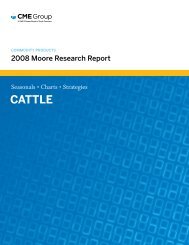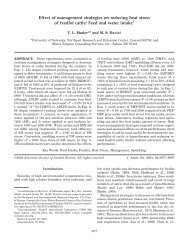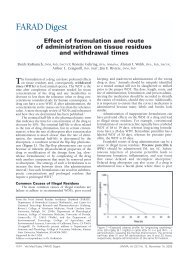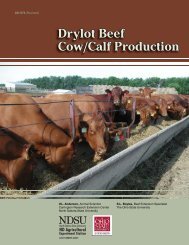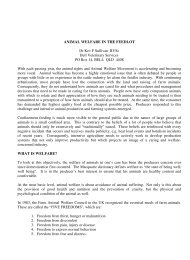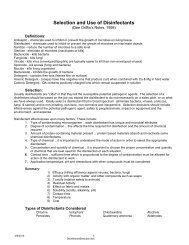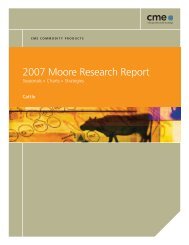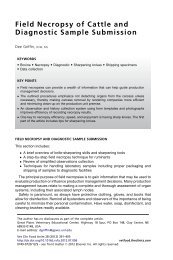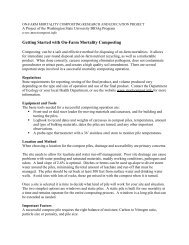CRIMES WITHOUT CONSEQUENCES - gpvec
CRIMES WITHOUT CONSEQUENCES - gpvec
CRIMES WITHOUT CONSEQUENCES - gpvec
You also want an ePaper? Increase the reach of your titles
YUMPU automatically turns print PDFs into web optimized ePapers that Google loves.
3. History of U.S. Humane Slaughter Initiatives<br />
The Federal Meat Inspection Act, which requires government oversight of the slaughter<br />
of cattle, sheep, goats, pigs, horses, mules and other equines for human consumption,<br />
became U.S. law in 1906, following publication of Upton’s Sinclair’s classic novel, The<br />
Jungle. But while Sinclair voiced concern for the fate of animals in slaughterhouses who<br />
were being mercilessly bludgeoned to death by sledgehammers, the scope of the law was<br />
limited to food safety.<br />
In fact, animal advocates in the United States had been faced with the issue of cruel<br />
slaughterhouse methods since the inception of the humane movement in the late<br />
1800s, as described by this excerpt from a 1960s article on the history of humane<br />
slaughter: “During the early years of the American Humane Association (AHA), many<br />
humanitarians visited abattoirs throughout the country and brought to the annual AHA<br />
meetings reports of blood, filth and pain. But beyond their reports—and indignant<br />
discussions among other delegates at the annual meetings—nothing of any moment was<br />
accomplished toward the elimination of slaughterhouse cruelties.” 25<br />
That changed when AHA and other U.S. animal advocacy groups initiated an intensive<br />
publicity campaign in the 1920s to educate the public about the need for more humane<br />
slaughter methods. In 1929, the AHA and the American Meat Institute (AMI), the trade<br />
association of the slaughter industry, formed a joint committee to work on humane<br />
slaughter methods and devices, and in the 1950s, the AHA introduced its “Seal of<br />
Approval,” which it granted to companies for the humane slaughtering of meat animals.<br />
By this time, the largest slaughter companies had begun to introduce in their plants<br />
methods to render animals insensible to pain before slaughtering or bleeding. 26 Although<br />
the meat packers promised to adopt humane methods voluntarily and the AHA announced<br />
with confidence that the packers are with us, they were not.<br />
In 1955, to promote the adoption of humane stunning technology by the slaughter<br />
industry, Senator Hubert H. Humphrey of Minnesota introduced the first humane<br />
slaughter legislation in the U.S. Senate. The meat packers sought adoption of a study bill,<br />
rather than a legal mandate for humane slaughter, but they did not prevail. The humane<br />
slaughter legislation eventually passed in 1958, following one of the most intensive<br />
lobbying and public relations campaigns ever conducted in congressional history, and it<br />
was signed into law by President Eisenhower, to become effective June 30, 1960.<br />
However, while the original Humane Methods of Slaughter Act required that all U.S.<br />
slaughter plants selling meat to the federal government use humane methods, the law<br />
lacked an enforcement mechanism. This problem was addressed by an amendment<br />
to the Federal Meat Inspection Act sponsored by Senator Robert Dole of Kansas and<br />
25 The campaign for humane slaughter, The National Humane Review, January-February 1962, p. 51.<br />
26 Ibid.<br />
21




